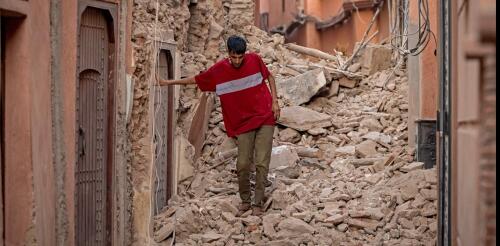Plate tectonic theory
Thousands of earthquakes in recent weeks have shaken the Icelandic fishing town of Grindavík, about 30 miles (50 kilometers) southwest of the capital Reykjavik. They have triggered evacuations and warnings that a volcanic eruption may be imminent. While the idea of magma rising was no doubt scary for tourists visiting the nearby Blue Lagoon geothermal spa, which was closed as a precaution, Iceland’s residents have learned over centuries to live with their island’s overactive geology. So, why is Iceland so volcanically active? The answer has two parts: One has to do with what geologists unimaginatively call a hotspot, and the other involves giant tectonic plates that are pulling apart right beneath the island. As a geologist, I study both. Eruptions in this region of Iceland tend to flow rather than being explosive, as residents saw in July 2023 and in 2021-22. Kristinn Magnusson/AFP via Getty Images...
Earthquakes, large and small, happen every single day along zones that wrap around the world like seams on a baseball. Most don’t bother anybody, so they don’t make the news. But every now and then a catastrophic earthquake hits people somewhere in the world with horrific destruction and immense suffering. On Oct. 7, 2023, a 6.3 magnitude earthquake struck near the historic city of Herat, Afghanistan, leaving more than 1,000 people dead in the rubble, according to estimates. It was followed by two more earthquakes, just as powerful, on Oct. 11 and Oct. 15. A few weeks earlier, on Sept. 8, a 6.8 magnitude earthquake shook ancient villages apart in the Atlas Mountains of Morocco, killing nearly 3,000 people. In February 2023, a large area of Turkey and Syria was devastated by two major earthquakes that hit in close succession. As a geologist, I study the forces that cause earthquakes. Here’s why some seismic zones are very active while others may be quiet for ge...

